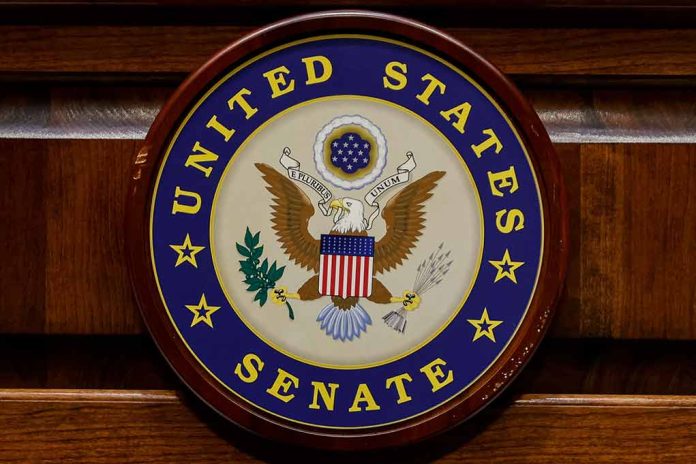
Ahead of the 2024 elections, the Republican Party appears poised to regain control of the U.S. Senate, but the path remains fraught with pivotal races that could tip the balance.
At a Glance
- Republicans may shift Senate control from Democrats.
- GOP needs a net gain of two Senate seats.
- Strategic gains possible in Montana, Texas, Florida, and West Virginia.
- Races in swing states like Wisconsin and Pennsylvania remain competitive.
GOP Makes Significant Gains
Several key Senate races indicate a favorable trend for Republican candidates, suggesting potential shifts in party control. According to a New York Times/Siena College poll, Republican Tim Sheehy is leading incumbent Democrat Jon Tester in Montana. Tim Sheehy, a businessman and former Navy SEAL, leads by 8 points, 52% to 44%. In West Virginia, the retirement of Democratic Senator Joe Manchin presents another opportunity for the GOP to secure a crucial seat.
Republican incumbents in Texas and Florida are also maintaining leads in their respective races. Texas Senator Ted Cruz holds a slight advantage over Democratic opponent Colin Allred, while in Florida, Senator Rick Scott leads his challenger Debbie Mucarsel-Powell by a wider margin. Polls indicate these states could fall under Republican control, but GOP candidates face considerable competition in swing states like Wisconsin and Pennsylvania.
Competitive Contests in Swing States
Democratic seats in Michigan, Ohio, Pennsylvania, and Wisconsin are heavily contested, with outcomes that could significantly impact which party holds the Senate majority. Michigan sees Democrat Elissa Slotkin ahead of Republican Mike Rogers, while Ohio’s Sherrod Brown faces a tight race with Republican Bernie Moreno. Meanwhile, Wisconsin incumbent Tammy Baldwin leads GOP candidate Eric Hovde, and in Pennsylvania, Democrat Bob Casey contends with a strong challenge from Republican Dave McCormick.
These races could determine which party steers the legislative agenda, influencing significant decisions such as Cabinet appointments and judicial nominations. Additionally, independent candidate Dan Osborn in Nebraska leads incumbent Deb Fischer, further complicating the GOP’s quest for unequivocal control. Osborn’s refusal to align with either party adds another layer of unpredictability to the Senate race dynamics.
Implications for 2025 and Beyond
The 2024 Senate elections stand crucial for setting the legislative and executive landscape for the following years. Currently, Democrats hold a slim 51-seat majority in the Senate. Republicans must gain at least two seats to reclaim control. The presidential contest between Donald Trump and Kamala Harris further intensifies the stakes, as Senate control will heavily influence the next administration’s trajectory.
Watchful eyes will be on the pivotal races in Michigan, Ohio, and several other battlegrounds, where any shift could have profound consequences. The path to Republican control is outlined but remains susceptible to the ever-changing political winds. As the election approaches, these developments will paint a clearer picture of the nation’s political future.
Sources
1. Republicans Score Triple Senate Boost With America’s Most Accurate Pollster
2. The 10 Races That Will Determine Control of the Senate









